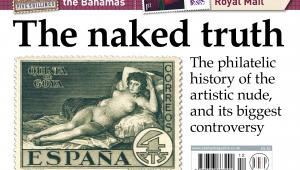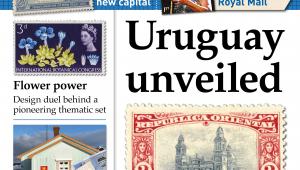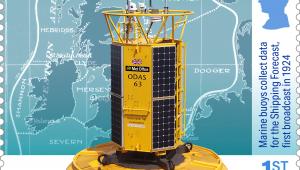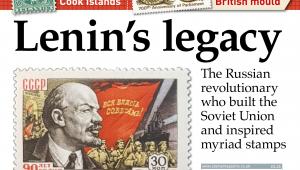GB: Classic Locomotives of England

The Classic Locomotives of England miniature sheet, to be issued on February 1, is the first of a series of four highlighting the contribution made by steam engines to British industry in the 19th and early 20th centuries.
Across the public railway network, and also in industrial locations such as factories, quarries and docks, locomotives of all shapes and sizes were the workhorses of the national economy until as recently as the 1960s, cared for by a vast army of drivers and firemen, engineers and mechanics.
Philip Parker of Royal Mail Stamps said: ‘For many people, the age of steam meant bright-liveried passenger locomotives, but in the background a huge number of other less glamorous steam machines were playing a massive role.’
The sheet was designed by Delaney and printed in lithography by Cartor. The Classic Locomotives series will feature a further three miniature sheets, which will look at engines which operated in Scotland, Northern Ireland and Wales.
OUR VERDICT
COMMEMORATIVE WORTH 




There seems no obvious reason for this series, besides milking a popular theme
QUALITY OF DESIGN 




A simple, attractive sheet, despite the awkward mix of monotone and colour
WOW FACTOR 




Most people won’t be able distinguish these stamps from August’s set
1st class BR Dean Goods No2532
This British Railways local service Dean Goods class locomotive is photographed at East Garston in Berkshire in 1951, bound for Newbury. These sturdy Victorian goods locos saw a great deal of use in both world wars, but by the 1950s had been relegated to light duties, such as hauling passenger trains on rural branch lines.
60p Peckett R2 Thor
This Peckett 1689 was built in 1925 for the Tunnel Cement Company of Purfleet, Essex, and is photographed at Thurrock, where it spent its entire working life. Compact, powerful and rugged, it was used for four decades before being scrapped in 1965.
88p L&YR 1093 No1100
This Lancashire & Yorkshire Railway loco is photographed at Liverpool Exchange Station in 1909, pulling the 14.10 passenger train to Hull. From the middle of the 19th century, British train companies offered integrated travel to continental Europe, combining rail services with steamships sailing from ports around the UK.
97p BR WD No90662
During World War II, more than 700 heavy-freight ‘Austerity’ locomotives were built for military service. Before D-Day in 1944, the army had very little use for them, and they were loaned to the civilian railways, but after the invasion they were shipped to France and transported goods and troops.
Other products
A first day cover and stamp cards will be available, while the presentation pack sees David Rooney, who is the Curator of Transport at the Science Museum, taking a closer look at England’s steam railways.
A Railway Heritage Portfolio contains illustrated prints of each locomotive in the set by a renowned railway artist, with the relevant stamp affixed and cancelled. It also includes a complete set of stamp cards, and a fold-out poster giving technical data on the trains and a map of their operating lines.














